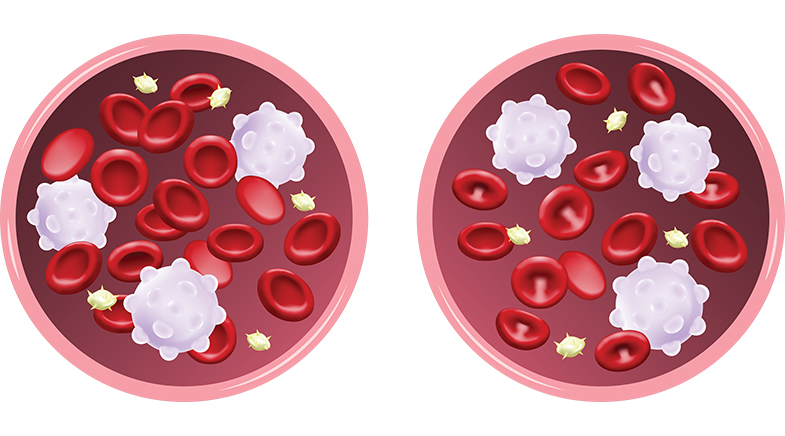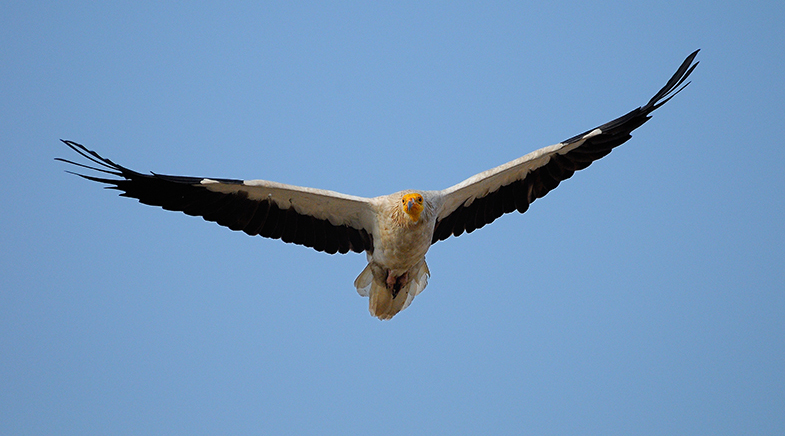Of loans, laser and larvae
-
- from Shaastra :: vol 03 issue 01 :: Jan - Feb 2024

Start-ups work on easy credit for farmers, satellite contact, and a protein-rich by-product of waste.
Ensect Farm
Founders: Anup T.V., Nishitha T. and Rohit Korvi
Year: 2022
Big idea: Using black soldier fly larvae to compost organic municipal solid waste and to produce alternative proteins
Quite a few things fell into place for Anup T.V. to become an entrepreneur. After a Master’s in Biotechnology, Anup was working in Dubai when he got married and moved to Vellore. Then the COVID-19 pandemic struck, and he thought of starting a venture.

Around this time, Vellore was being commended for waste management. Anup, however, thought the technology being used was dated. So, after coming across some related literature, he decided to break down biowaste using black soldier fly larvae (BSFL).
Anup and his partners signed an agreement with the Indian Council of Agricultural Research – National Bureau of Agricultural Insect Resources (ICAR-NBAIR) and submitted a proposal to the Vellore Municipal Corporation for entomocomposting — using larvae to tackle biowaste. It was not only an eco-friendly solution to waste, but also generated a protein-rich by-product — insect larval biomass and frass.
With the Corporation accepting the proposal, they started composting organic solid waste in Vellore, and Ensect Farm Pvt. Ltd. was set up.
The agreement with NBAIR helped the team to learn more about composting organic solid waste. Their idea took shape at the VIT Technology Business Incubator. The founders built a unit where the flies could breed, maintaining the temperature and the humidity at ideal levels. The team gradually increased the quantity of waste they could process and, with a few grants, proceeded with their pilot project.
The BSFL feeds voraciously as it needs nutrition to go through multiple stages to emerge as a fly. This is when the composting happens, and the by-product — alternative protein, insect oil and compost — becomes available.
The protein-rich by-product can be used in agriculture and as feed in the poultry and aquaculture industries, he says. The company processes around 600 kg of waste a day and hopes to scale it up. The compost and the feed are the two revenue streams for the company, Anup adds.
Astrogate Labs
Founder: Nitish Kumar Singh
Year: 2017
Big idea: To enable laser communication on space-based platforms
A erospace engineer Nitish Kumar Singh wanted to transform how satellites communicated — an idea that gave birth to his company, Astrogate Labs. Radio frequencies, he explains, have limitations and are not scalable when it comes to long-range high-speed communication. So, he envisioned a future where lasers could replace radio waves as the primary method for transmitting data to and from space. “This would enable orders of magnitude increases in bandwidth and data rates compared with traditional radio frequency (RF) communication systems,” says Singh, who has been working in space technology for close to a decade.

The goal was to develop optical communication systems between satellites, spacecraft and ground stations that could provide secure links with speeds exceeding 1Gbps. This would revolutionise applications such as imaging, navigation, exploration and communications that rely on satellites. “Our big vision was to make laser communication ubiquitous for all space-based platforms,” says Singh, who has an MTech in Aerospace Engineering from Indian Institute of Technology Kharagpur.
RF downlink systems are straining under growing data demand, along with spectrum allocation and coordination issues. Astrogate’s laser communication system enables satellites to return over ten times more data at nearly half the cost of existing RF systems, Singh says. Its products use laser beams to transport data between satellites and ground stations at speeds exceeding 1Gbps. It uses a concept called free-space optical communication that employs lasers to send data through free space. The system consists of a laser transmitter on the satellite which sends a focused modulated laser beam to a receiver on the ground. An important component is the precision pointing and tracking system that keeps the laser beam centred on the receiver. Astrogate’s proprietary systems enable robust tracking and pointing acquisition even for fast-moving low Earth orbit satellites. The laser beams are resilient to jamming or interception. Astrogate’s satellite laser downlink terminal is compact and fits within the SWaP (Size, Weight and Power) constraints of small satellites. Singh says Astrogate’s space-to-ground laser communication system has been designed for small satellite Earth observation constellations that are struggling with RF-limited downlinks and spectrum congestion. Thanks to the inherent security, the system can be used in defence communication, he says.

Bengaluru-based Astrogate Labs, which was set up with investments from venture capitalists, has done a pilot demonstration and delivered early units for a 1Gbps bi-directional laser communication system with full auto-tracking for potential ship-to-ship and ship-to-shore communication applications. It is working towards its first mission for space-to-ground laser systems.
KiVi (Agrosperity Tech Solutions)
Founders: Joby C.O., Rajendra Kumar, Padmakumar K., Salil Nair and Manoj Ramaswamy
Year: 2021
Big idea: A ‘phygital’ lending platform for farmers and agri-rural entrepreneurs
With more than two decades’ experience in rural banking and microfinance, Joby C.O. had a fair idea of the problems that farmers faced in getting credit from lenders. A chartered accountant by training, Joby had handled these sectors in a bank, and understood that farmers had seasonal demands. Before the monsoons, for instance, they required money to buy seeds, fertilisers and pesticides. The amount of money they needed was linked to their produce. And while more than 50% of farmers’ incomes came in bulk, bankers expected repayment in equated monthly instalments.

“This is how KiVi was born,” Joby says. KiVi stands for Kisan Vikas — or farmers’ welfare. The initial idea of KiVi was to bring farmers, input retailers and output aggregators to the same platform using technology. However, a meeting with a venture capitalist who specialised in the agriculture sector convinced him that getting appropriate credit was a bigger challenge to address. So, KiVi emerged as an agri-financial technology company with credit and commerce as its focus.
Chennai-based KiVi connects all those involved in agriculture — from farmers to banks to buyers — and enables commerce among them. The start-up addresses many issues, he adds. Since banks have priority sector lending targets to meet, they can use KiVi’s platform for lending money. There are more than ten crore farmers in the country, and the banking system needs to reach out to this community profitably to achieve its lending targets. Then there are large companies that buy agriculture produce, input retailers and output aggregators, including farmers’ organisations. If farmers need funds, they can join the platform and seek out the right lenders. “We are trying to digitise the whole chain. We are bringing in the best practices of underwriting capabilities,” Joby says.

Incubated at the Indian Institute of Technology Madras Research Park, KiVi, whose co-founders are Joby’s associates and former colleagues, recently raised a seed round of funding from a clutch of investors. KiVi will get its income from a margin on the lending rate when banks and other institutions provide loans to farmers and others. The company has a ‘phygital’ model — a physical presence combined with a digital platform. KiVi hopes to get an NBFC (non-banking finance company) licence, which will enable it to be a co-lending partner with large banks.
Have a
story idea?
Tell us.
Do you have a recent research paper or an idea for a science/technology-themed article that you'd like to tell us about?
GET IN TOUCH














